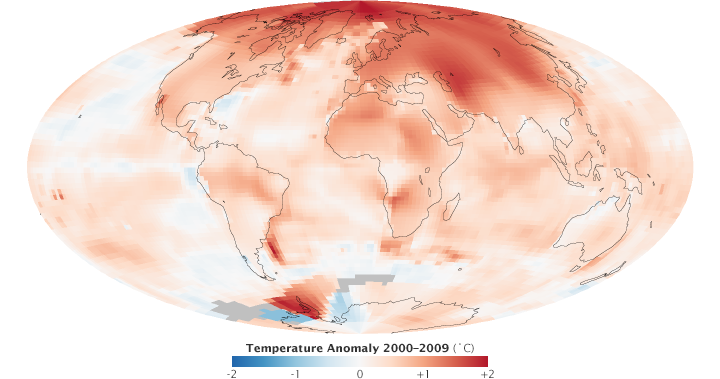Not a Chimera Global Economic Trends Tend to Have Global Economic Causes
Post on: 16 Март, 2015 No Comment

The Economic Policy Institute Blog
Not a Chimera. Global Economic Trends Tend to Have Global Economic Causes
Posted May 29, 2014 at 10:37 am by Robert E. Scott
The Brookings Institution’s Mark Muro and Scott Andes recently published two blog posts which claim that the problems of U.S. manufacturing demand being depressed by large trade deficits—particularly trade deficits with China—are “a manufactured chimera,” and that the problems facing U.S. manufacturing are actually just evidence of insufficient domestic innovation. By deflecting attention from China’s manufacturing surplus, and the trade and currency policies China has used to dominate the market for manufacturing exports, Muro and Andes are distracting, not educating, those genuinely concerned with giving U.S. manufacturing a chance to compete in global markets. Claiming that it’s the domestic pace of innovation that is somehow the real cause of trouble is oddly provincial, and ignores some key global facts—like the fact that China has doubled down on its currency manipulation policies in the past year, and that its manufacturing trade surplus is projected to grow in the future unless something is done about it.
The most fundamental problem facing U.S. manufacturing is a shortage of demand for U.S. manufactured products. Four years after the end of the Great Recession, real U.S. manufacturing output was 2.2 percent below its pre-recession level. Demand for U.S. manufactured products was much higher at this point in earlier business cycles. 11.1% higher in 2005 (after the end of the dot-com bubble), and 23.9 percent higher in 1995, four years after the 1990-1991 recession. In other words, our manufacturing problem today is, first and foremost, a macroeconomic problem. Without adequate demand, manufacturers will not invest in R&D, build new plants, or hire new workers. Demand for output from U.S. manufacturing can either come from domestic sources—American consumers, businesses and governments—or from foreign sources. Net foreign demand for U.S. manufacturing output is best measured simply as net exports (exports minus imports) of manufactured goods.
Without a coherent understanding of the problems confronting U.S. manufacturing, Muro and Andes end up throwing darts at the problem, and it’s not surprising to find that their solutions are self-serving. They argue that the solution to our manufacturing problems is to invest more in R&D, training and “strong regional manufacturing ecosystems.” Such programs could be effective in modestly boosting productivity growth in manufacturing, but only in the context of strong and growing demand for U.S. manufactured products. In a world of inadequate demand, these policy prescriptions are just another form of “pushing on a string ,” a well-known problem in monetary policy, but equally apt when it comes to manufacturing policy development.
China has been beggaring its neighbors and stealing aggregate demand for manufactured products from its trading partners for more than a decade. In the past 15 months alone, China has invested more than $600 billion in buying foreign exchange reserves in order to depress the value of its currency and artificially boost the competitiveness of its products. It acts like a subsidy to all of China’s exports, and a tax on U.S. exports to China, and to every country where we compete with China. $600 billion is a lot of money, and an analysis that simply ignores this huge development in the global economy and argues for “strong [intra-U.S.] regional manufacturing ecosystems” is far too narrow.
The United States is the top target market for China’s currency-subsidized, artificially cheapened exports. I have estimated that eliminating currency manipulation by China and about 20 other countries (most in Asia) could reduce the U.S. trade deficit by $200 to $500 billion per year, creating 2.3 million to 5.8 million U.S. jobs. About 40 percent of the jobs gained (891,500 to 2.4 million jobs) would be in manufacturing—no other single trade, financial, or macro-economic policy could have a larger, more beneficial impact on manufacturing output or employment.
Turning to the alleged “chimera,” it turns out to be old news, just as flawed now as it was a year ago, when I first addressed the subject. The claim is that U.S. trade statistics don’t accurately reflect the “value added” by various countries, and that much of the value of products that we import from China actually originates in other countries such as Korea, Japan and Germany. While this claim seems plausible, it turns out that the Chinese scholars and others who have developed the “new… better trade data” endorsed by Muro and Andes have got their thumbs all over the scales. The new data is biased and full of holes, and is, in many ways, worse than old-fashioned “conventional trade statistics.”
There are at least four core problems with value-added trade statistics, as I explained in a recent EPI report. First, the value-added trade framework, which was originally developed by the OECD and the World Trade Organization. fails to account for rapid technological change and the fact that China is moving rapidly up the value chain and increasing the domestic content of its exports. The methods proposed for estimating value-added trade rely on old, fixed co-efficient models to estimate the Chinese content of its exports, which fail to reflect the dynamic nature of China’s economy. Thus, the proposed measures underestimate the domestic value-added in China’s exports.
Second, China also cooks the books on its trade statistics. China under-reports its exports and over-reports its imports, creating a distorted picture of its overall trade, as shown in the figure below (from our recent report, Stop Currency Manipulation and Create Millions of Jobs ). Value-added trade estimates begin by attempting to reconcile U.S. Chinese, and other trade statistics, giving equal weight to China’s fudged trade data. This artificially reduces the value of the U.S. gross trade deficit with China, even before value-added adjustments are applied. It’s a classic statistical mistake, a transparent case of garbage in, garbage out.














